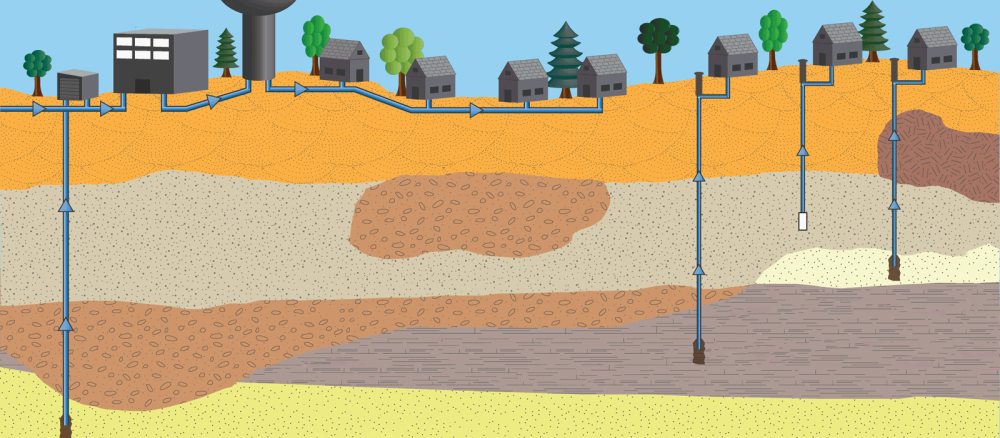As Minnesotans, we’re used to the way water moves on the Earth’s surface, but we forget that vast amounts of groundwater moves beneath our feet. You may think of groundwater as sitting in an aquifer like liquid in a tank, but it actually travels. And it can pick up and carry contamination as it moves.
Hydrogeologists at the Minnesota Pollution Control Agency (MPCA) study the movement of underground water to monitor the contamination that might reach drinking-water wells. “If we understand where [contaminants] can flow in the subsurface, then we can understand where those particles and contamination could flow over the next 20 years,” explains Rebecca Higgins, a senior hydrogeologist with the MPCA. The agency uses this knowledge to help treat contaminated groundwater and clean up contaminated sites, to ensure all Minnesotans will have safe drinking water.
A top concern for MPCA hydrogeologists in the Twin Cities east metro area is PFAS, or per- and polyfluoroalkyl substances. These contaminants, found in everything from firefighting foam to food packaging, are hazardous to human health at elevated concentrations. 3M formerly manufactured PFAS in the eastern part of the Twin Cities, where it contaminated municipal and private wells.
Work to restore safe drinking water in the area, including modeling the geology, is funded by a legal settlement with 3M. The hydrogeologists doing the modeling hope to reveal how contamination spreads through underground rock formations, which look like a multi-flavored layer cake. Some layers are solid like a pound cake, while other parts erode like a crumbly coffee cake. Water can flow downward, vertically, through porous layers but only horizontally along the more dense sections of rock.
The modelling reveals gaps in the bedrock, such as the Cottage Grove Fault System, that enable water to flow vertically through dense rock layers, carrying PFAS with it. Local lakes, rivers, and glacial valleys of clay and silt also transmit water between any layers into which they cut. This vertical exchange exacerbates contamination as PFAS moves from upper, contaminated aquifers to lower, clean ones.
As a short-term solution, it’s tempting to simply drill deeper into the bedrock for clean water. However, contamination can spread through the holes drilled for poorly constructed wells. Hydrogeologists monitor well drilling to protect the region’s most precious resource: the Mount Simon aquifer, one of the most-pristine aquifers in the East Metro area.
Hydrogeologists like Higgins use their knowledge of subsurface flow to preserve the Mount Simon aquifer and other protected resources. “Our first priority is to make sure we are providing safe and sustainable drinking water,” she explains. However, they couldn’t achieve this without first considering where groundwater is moving beneath us. “This is exactly why geology matters,” Higgins says.
–By Caroline Frischmon, a University of Minnesota student who works with the Science Communication Lab and completed an internship with the MPCA in 2020.
